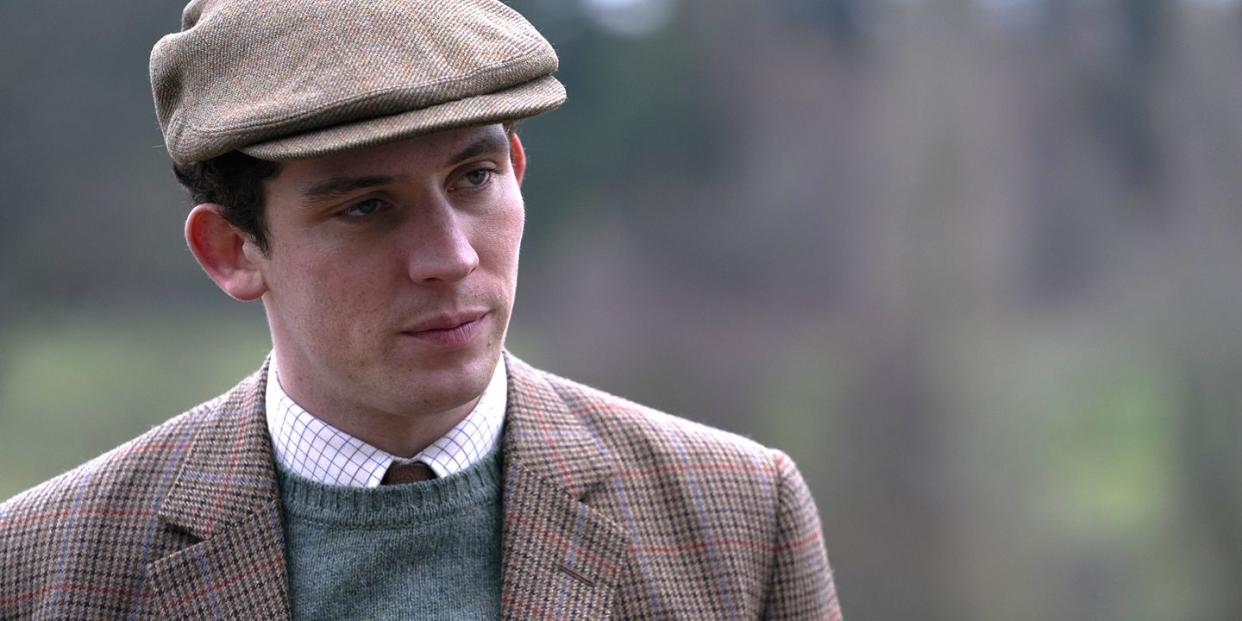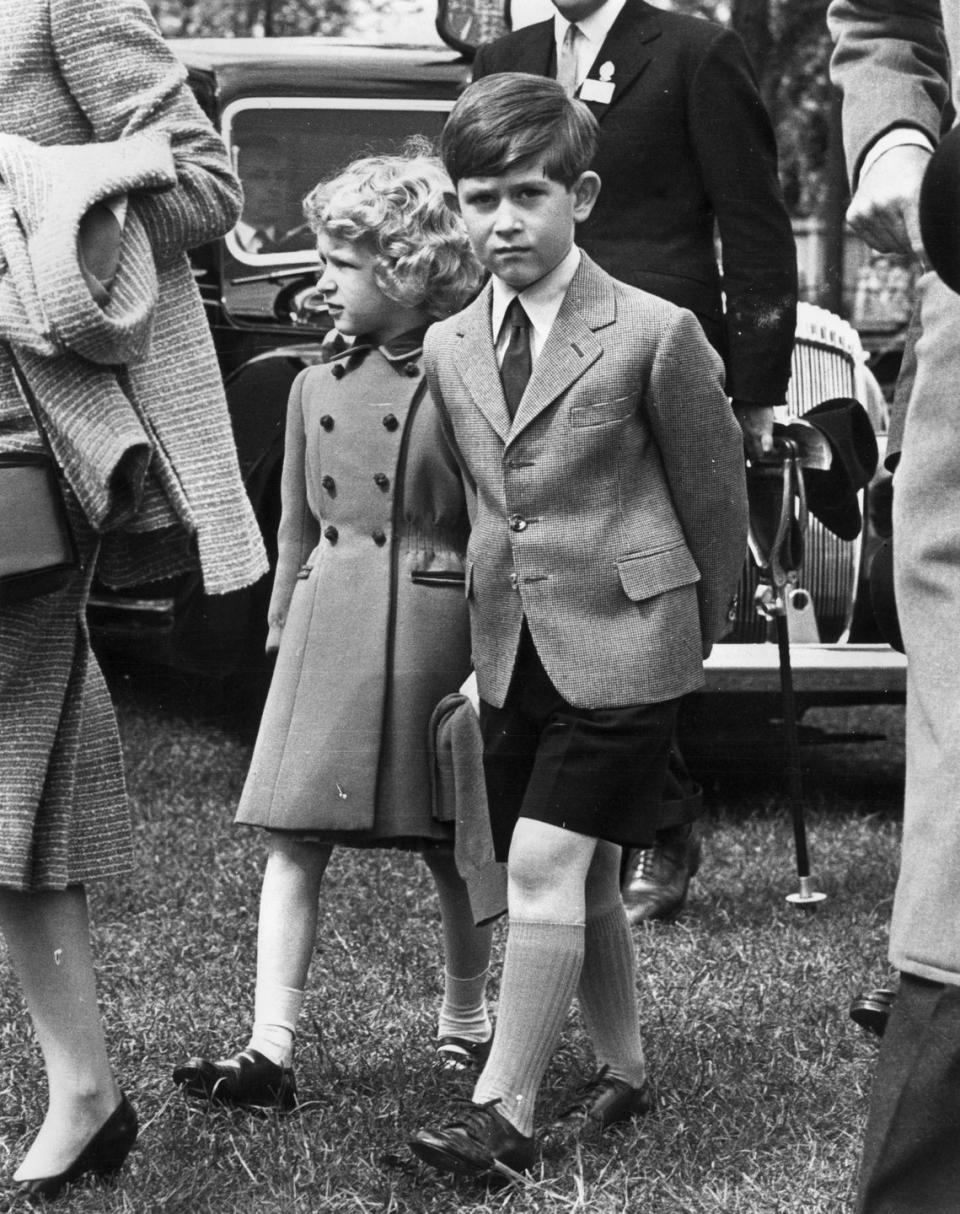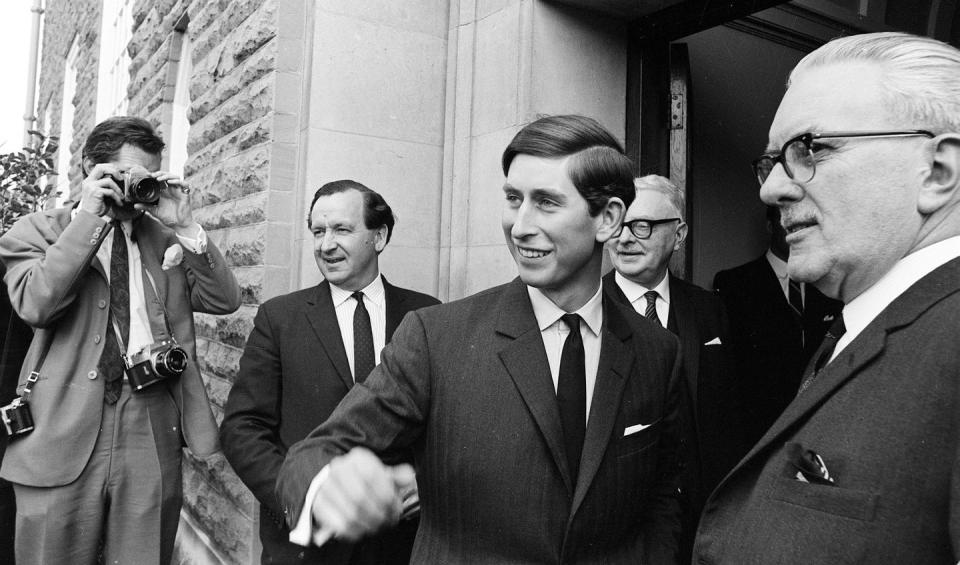Why Prince Charles Took the Title "Prince of Wales"

Prince Charles is the heir to the throne, ex-husband of Princess Diana, and, of course, father to Princes William and Harry. You usually hear him introduced as the "Prince of Wales," but what does that really mean?
Season 3 of The Crown delves a bit into Charles' personal history with the title, depicting his time studying Welsh at the University of Wales, and his investiture as Prince of Wales at Caernarfon Castle in July 1969.
There's actually a fascinating history behind the official title. Here's how it came to be.
It's given to the male heir to the British throne.
The title Prince of Wales is designated for the male heir to the British throne, since that’s the person who’ll become the next king. Prince Charles is, of course, the first child of Queen Elizabeth II and her husband Prince Philip.
The title is not assumed at birth, however. The sovereign must decide when to bestow it, and the queen gave Charles the title on July 26, 1958—several months before he turned 10. Prince Charles is the 21st person to hold the title and is the longest-serving Prince of Wales.

Charles had his investiture ceremony 11 years after receiving the title.
If you’re watching The Crown season 3, episode 6 focuses on Charles’ investiture as Prince of Wales in 1969. “Tywysog Cymru,” the episode’s title, translates to “Prince of Wales” in Welsh.
Charles' investiture took place on July 1, 1969 at Caernarfon Castle in northwest Wales. The ceremony formally installed the 20-year-old Charles with his titles (the Prince of Wales always takes the title Earl of Chester as well), and he received his insignia from the queen: a sword, a coronet, a mantle, a gold ring, and a gold rod. According to an archived version of Prince Charles' official website, the queen waited to hold Charles' investiture ceremony until "the prince was old enough to understand fully its significance." After the ceremony, Charles embarked on a four-day tour of Wales to meet the people of the country and speak their language.

According to the BBC, 4,000 people attended the ceremony on castle grounds. Another 90,000 took to the streets of Caernarfon, and 500 million people watched worldwide.
Charles studied in Wales for eight weeks before his investiture.
Just like we see on The Crown, Prime Minister Harold Wilson did suggest to the queen that Charles study the Welsh language in Wales for a semester, according to royal historian and The Crown advisor Robert Lacey in The Crown: The Official Companion Volume 2. Wilson's motives were purely political; he hoped to appeal to Welsh votes while also tamping down on rising Welsh Nationalist sentiment. Charles studied at Aberystwyth University under professor Edward Millward, a staunch Welsh Nationalist with whom Charles ultimately developed a friendship.

Lacey writes that much of the pomp and circumstance of Charles' investiture extends back to the 1911 ceremony for the future Edward VIII—Queen Elizabeth's uncle and the king who would ultimately abdicate the throne to marry American divorcée Wallis Simpson.
What does the title mean?
The title "Prince of Wales" is steeped in a long, bloody history. The Welsh leader Llywelyn ap Gruffudd died in 1282 during King Edward I's conquest of Wales and was the last Wales-born royal to hold the title. According to Lacey's book, Edward I gave his son (the future Edward II) the title in 1301 as a show of solidarity with the newly-conquered Welsh people. That didn't exactly tamper animosity, Lacey writes, but Welsh backlash hasn't stopped the British monarchy from using the title to this day.
At the time of Charles' investiture in 1969, Welsh Nationalism was growing. The Welsh Nationalist party had elected a representative to the House of Commons and several groups protested Charles' ceremony, Lacey writes. Some radicals even planted bombs to interfere with the occasion, though they didn't detonate at the intended time.
Charles has a special bond with Wales today.
Today, Prince Charles and his wife, Camilla, Duchess of Cornwall, spend a week in Wales every summer for a series of engagements known as "Wales Week," per the prince's official website. The prince regularly attends events in the country, and the couple own a home called Llwynywermod in Llandovery, Wales that relies on local artisans and craftspeople to maintain and furnish it.
You Might Also Like

